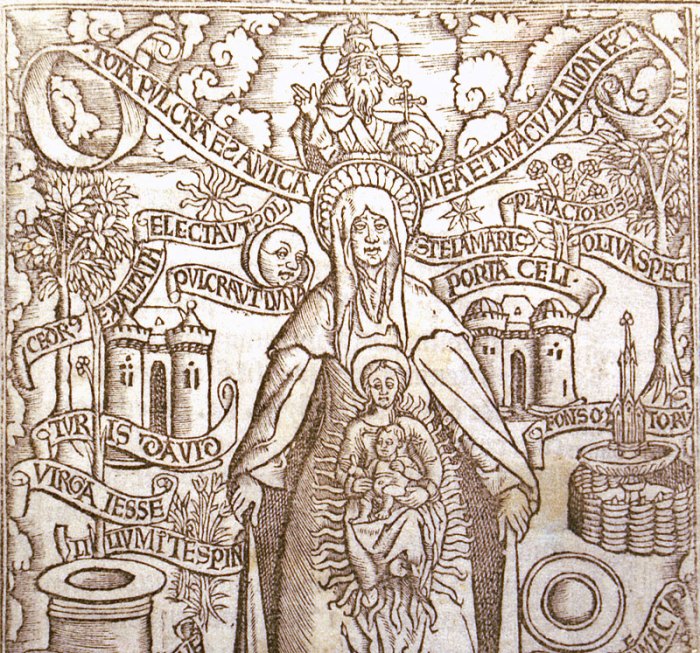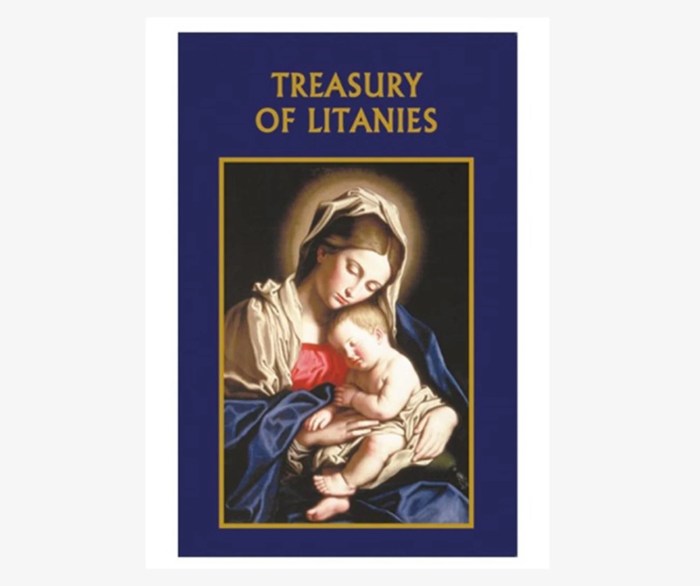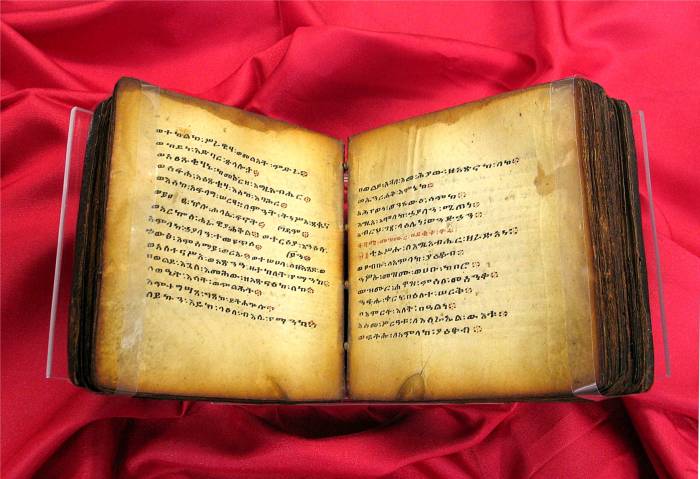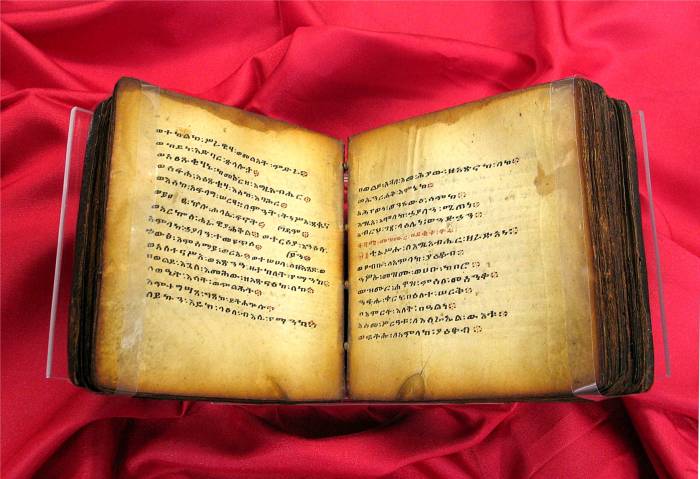Ever wondered what secrets lie within the ancient prayers of the Ethiopian Orthodox Church? Get ready to dive deep into the “Book of Prayer – መጽሐፈ ጸሎት THEOTOKIA (WEDDASE MARIAM) Selected Psalms Litanies and Prayers from the Ethiopic Book of Hours Missal and other Liturgical Sources,” a treasure trove of spiritual wisdom that’s been passed down through generations.
This book is more than just a collection of prayers; it’s a window into a rich history, a vibrant culture, and a profound connection to the divine. Imagine yourself holding a book that’s been used for centuries to connect with God, and you’ll start to grasp the power and beauty that lies within these pages.
The “Book of Prayer” is a captivating journey into the heart of Ethiopian Orthodox tradition. It’s a guide to the Theotokia (Weddasse Mariam), a collection of hymns and prayers dedicated to the Virgin Mary, and explores the profound role she plays in the faith.
You’ll find yourself immersed in a world of psalms, litanies, and prayers that have been passed down through generations, each one offering a unique perspective on faith, devotion, and the divine.
The Ethiopic Book of Hours

The Ethiopic Book of Hours, known as መጽሐፈ ጸሎት( Meṣḥafe Ṣəlot), is a rich and complex liturgical text that holds a central place within the Ethiopian Orthodox Tewahedo Church. Its origins and development are intricately intertwined with the history and traditions of the Ethiopian Church, reflecting a unique blend of ancient Christian practices and local cultural influences.
The Origins and Development of the Ethiopic Book of Hours
The Ethiopic Book of Hours traces its roots back to the early centuries of Christianity in Ethiopia, a period marked by the establishment of the Ethiopian Church and the adoption of a distinctive liturgical tradition. While influenced by the ancient Coptic tradition, the Ethiopian Book of Hours developed its own unique character over time, incorporating elements from various sources, including:
- The ancient Coptic Book of Hours, which served as a primary model for the Ethiopian version.
- The Byzantine tradition, which introduced elements like the Theotokia (Weddasse Mariam), hymns dedicated to the Virgin Mary.
- Local Ethiopian traditions, which contributed to the inclusion of unique prayers, hymns, and readings.
The Ethiopic Book of Hours evolved over centuries, with various revisions and additions reflecting the changing needs and theological developments of the Ethiopian Church. This process resulted in a multifaceted text that encompasses a wide range of prayers, hymns, and readings, offering a comprehensive guide for daily and liturgical worship.
The Cultural and Religious Significance of the Ethiopic Book of Hours
Within the Ethiopian Orthodox Tewahedo Church, the Book of Hours plays a vital role in the spiritual life of believers, serving as a guide for daily prayer, meditation, and liturgical participation. Its significance stems from its unique combination of theological depth, historical context, and cultural relevance.
- Theological Depth:The Book of Hours is a rich repository of theological teachings, reflecting the core beliefs of the Ethiopian Orthodox Church, including the Trinity, the Incarnation, the Virgin Mary, and the saints.
- Historical Context:The text reflects the historical journey of the Ethiopian Church, preserving ancient prayers, hymns, and readings that have been passed down through generations.
- Cultural Relevance:The Book of Hours is deeply embedded in Ethiopian culture, its prayers, hymns, and readings often incorporating traditional themes, imagery, and language, making it a powerful expression of Ethiopian faith and identity.
The Book of Hours is not merely a collection of texts; it is a living testament to the faith and tradition of the Ethiopian Orthodox Church, serving as a bridge between the past, present, and future, connecting believers to their spiritual heritage and guiding them on their journey of faith.
The Theotokia (Weddasse Mariam) and its Place within the Book of Hours
The Theotokia, also known as Weddasse Mariam, is a collection of hymns and prayers dedicated to the Virgin Mary, an integral part of the Ethiopian Book of Hours. The Theotokia holds a prominent place within the text, reflecting the profound veneration of the Virgin Mary within the Ethiopian Orthodox Church.
- Theological Significance:The Theotokia emphasizes the unique role of the Virgin Mary as the Mother of God, her role in the Incarnation, and her intercession for humanity. The hymns and prayers express a deep devotion to Mary, recognizing her as a powerful mediator and intercessor.
- Historical Context:The inclusion of the Theotokia within the Book of Hours reflects the influence of the Byzantine tradition, which introduced the practice of dedicating hymns and prayers to the Virgin Mary.
- Cultural Relevance:The Theotokia is deeply embedded in Ethiopian culture, with many of the hymns and prayers incorporating traditional themes and imagery, reflecting the strong veneration of Mary within Ethiopian society.
The Theotokia serves as a powerful expression of the Ethiopian Orthodox Church’s devotion to the Virgin Mary, enriching the Book of Hours with a profound sense of reverence and awe.
Exploring the Content and Structure
The Ethiopic Book of Hours, a treasure trove of ancient Christian tradition, offers a rich tapestry of prayers, hymns, and liturgical texts. This book, known as “መጽሐፈ ጸሎት” (Meṣḥafe ṣəlot) in Amharic, provides a framework for daily devotion and liturgical practice.
The Book of Hours is structured around a cyclical pattern, guiding the faithful through a journey of prayer and reflection throughout the day.
Yo, if you’re looking for some serious spiritual vibes, “BOOK OF PRAYER – መጽሐፈ ጸሎት THEOTOKIA (WEDDASE MARIAM) Selected Psalms Litanies and Prayers from the Ethiopic Book of the Hours Missal and other Liturgical Sources” is the real deal.
This book is like a time machine, taking you back to ancient traditions with its powerful prayers and litanies. You can Download And Listen Here and immerse yourself in the rich spiritual heritage of the Ethiopic Church. “BOOK OF PRAYER – መጽሐፈ ጸሎት THEOTOKIA (WEDDASE MARIAM)” is definitely a must-have for anyone seeking deeper connection to their faith.
Structure and Organization
The Book of Hours is organized into distinct sections, each with its own purpose and set of prayers. The structure of the book is designed to facilitate a daily cycle of prayer and reflection, guiding the faithful through a journey of devotion throughout the day.
So, you’re into the whole spiritual vibe, huh? “BOOK OF PRAYER – መጽሐፈ ጸሎት THEOTOKIA (WEDDASE MARIAM) Selected Psalms Litanies and Prayers from the Ethiopic Book of the Hours Missal and other Liturgical Sources” is definitely your jam. But let’s be real, even the most devout need a little organization in their life, right?
Check out this super cute 2022-2026 Five Year Planner Cute Sloth Calendar 2022-2026 Monthly Planner 60 Months Calendar January 2022 to December 2026 5 Year Planner 2022-2026 with Federal Holidays and Inspirational Quotes to keep your prayers and your life on track.
You know, like a little sloth wisdom for your soul. And who knows, maybe that planner will even inspire you to add a few more “BOOK OF PRAYER – መጽሐፈ ጸሎት THEOTOKIA (WEDDASE MARIAM) Selected Psalms Litanies and Prayers from the Ethiopic Book of the Hours Missal and other Liturgical Sources” to your routine.
Namaste, my friend.
- Theotokia (Weddasē Mariam):This section is dedicated to hymns and prayers honoring the Virgin Mary. It is a testament to the deep devotion to Mary in the Ethiopian Orthodox Church. The Theotokia includes a collection of hymns, known as “Weddasē Mariam,” which are sung in praise of Mary’s role as the Mother of God.
- Psalms:The Book of Hours includes a selection of Psalms, which are central to Jewish and Christian prayer. The Psalms provide a rich tapestry of emotions, ranging from lament and praise to thanksgiving and confession. They offer a framework for personal reflection and communal prayer.
- Litanies:Litanies are a form of prayer that consists of a series of invocations or petitions, often followed by a refrain. The Book of Hours features a variety of litanies, invoking the saints, angels, and God for protection, guidance, and mercy.
These litanies provide a structured way for the faithful to express their needs and aspirations.
- Other Liturgical Sources:In addition to the Theotokia, Psalms, and Litanies, the Book of Hours includes other liturgical texts. These may include hymns, prayers, and readings from the Bible. The inclusion of these texts enriches the devotional experience and provides a more comprehensive framework for prayer.
So, you’re thinking about diving into “BOOK OF PRAYER – መጽሐፈ ጸሎት THEOTOKIA (WEDDASE MARIAM) Selected Psalms Litanies and Prayers from the Ethiopic Book of the Hours Missal and other Liturgical Sources,” huh? That’s a pretty deep dive, like figuring out the secrets of a celebrity piano tuner, SECRETS OF A CELEBRITY PIANO TUNER.
But hey, if you’re looking for a spiritual journey, “BOOK OF PRAYER – መጽሐፈ ጸሎት THEOTOKIA (WEDDASE MARIAM) Selected Psalms Litanies and Prayers from the Ethiopic Book of the Hours Missal and other Liturgical Sources” is a great place to start.
Thematic Connections and Liturgical Functions
The prayers and hymns within the Book of Hours are interconnected by a number of themes. These themes reflect the central tenets of the Ethiopian Orthodox faith and guide the faithful in their devotional practice.
- Praise and Adoration:Many prayers and hymns are dedicated to praising God for his creation, his mercy, and his power. These expressions of adoration reinforce the believer’s commitment to God and his will.
- Intercession and Petition:The Book of Hours features numerous prayers of intercession, asking for God’s mercy and protection for the faithful, their families, and their communities. These prayers emphasize the importance of community and the role of God in human affairs.
- Repentance and Confession:The Book of Hours includes prayers of repentance and confession, acknowledging human sinfulness and seeking God’s forgiveness. These prayers encourage humility and a desire for spiritual growth.
- Liturgical Function:The prayers and hymns within the Book of Hours are designed for specific liturgical functions. For example, the Theotokia is often recited during the morning and evening hours, while the Psalms are used during various parts of the Divine Liturgy.
The structure of the Book of Hours reflects the cyclical nature of liturgical practice and provides a framework for communal prayer and devotion.
Key Elements of the Book of Hours
The Book of Hours is characterized by several key elements that contribute to its devotional significance.
- Thematic Unity:The prayers and hymns within the Book of Hours are united by a common theme of praise, adoration, intercession, and repentance. This thematic unity reinforces the central tenets of the Ethiopian Orthodox faith and provides a consistent framework for devotion.
- Cyclical Structure:The Book of Hours is organized around a cyclical structure, guiding the faithful through a journey of prayer and reflection throughout the day. This cyclical structure reflects the cyclical nature of liturgical practice and provides a framework for daily devotion.
- Liturgical Context:The prayers and hymns within the Book of Hours are designed for specific liturgical functions. The liturgical context of the Book of Hours provides a framework for understanding the meaning and purpose of the prayers.
- Spiritual Guidance:The Book of Hours offers spiritual guidance to the faithful, encouraging them to cultivate a deeper relationship with God through prayer and reflection. The prayers and hymns provide a roadmap for spiritual growth and transformation.
Table of Sections and Components
| Section | Purpose | Key Elements |
|---|---|---|
| Theotokia (Weddasē Mariam) | To honor the Virgin Mary and her role as the Mother of God. | Hymns, prayers, and readings related to Mary. |
| Psalms | To offer a framework for personal reflection and communal prayer. | Selected Psalms from the Book of Psalms. |
| Litanies | To invoke the saints, angels, and God for protection, guidance, and mercy. | Series of invocations or petitions followed by a refrain. |
| Other Liturgical Sources | To enrich the devotional experience and provide a more comprehensive framework for prayer. | Hymns, prayers, and readings from the Bible. |
Theological Themes and Devotional Practices

The Book of Hours, a rich tapestry of prayers, hymns, and scriptural readings, embodies a profound theological framework that informs the devotional practices of Ethiopian Orthodox Christians. This sacred text reflects the core beliefs of the church, particularly emphasizing the veneration of Mary, the nature of prayer, and the interconnectedness of humanity and divinity.
Veneration of Mary
The Book of Hours places Mary, the Mother of Jesus, at the heart of its devotional life. She is revered as the Theotokos, the God-bearer, and her role in the Incarnation is central to the text. The book contains numerous hymns and prayers dedicated to Mary, celebrating her purity, humility, and her role as intercessor for humanity.
- The Theotokia, a collection of hymns and prayers, is a testament to Mary’s central role in the faith. These hymns are often sung in the liturgy and focus on her divine motherhood and her role as a source of comfort and protection.
- The Book of Hours also includes numerous prayers asking for Mary’s intercession, recognizing her unique relationship with God and her ability to advocate for humanity.
Nature of Prayer
Prayer is presented as a fundamental aspect of the Christian life, a means of communicating with God and seeking His grace. The Book of Hours emphasizes the importance of prayer as a personal and communal practice, a way to express gratitude, petition for needs, and seek spiritual guidance.
- The text offers a variety of prayers, ranging from simple petitions to elaborate litanies, reflecting the diverse needs and desires of the faithful.
- The Book of Hours emphasizes the importance of persistent prayer, encouraging believers to pray without ceasing, acknowledging that God hears and answers the prayers of His children.
Relationship Between Humanity and Divinity
The Book of Hours underscores the profound relationship between humanity and divinity, emphasizing the accessibility of God through prayer and the possibility of communion with Him.
- The text highlights the divine mercy and compassion, recognizing that God is always available to those who call upon Him.
- The Book of Hours encourages believers to approach God with humility and reverence, recognizing His holiness and majesty.
Devotional Practices
The Book of Hours provides a framework for a rich and diverse range of devotional practices, reflecting the liturgical traditions of the Ethiopian Orthodox Church. These practices, including chanting, prostration, and the use of incense, are intended to facilitate a deeper connection with God and enhance the experience of prayer.
- Chanting plays a significant role in the devotional life, with the Book of Hours providing a collection of hymns and prayers meant to be chanted aloud. The rhythmic chanting is believed to enhance the spiritual experience and facilitate a deeper connection with the text.
Okay, so “BOOK OF PRAYER – መጽሐፈ ጸሎት THEOTOKIA (WEDDASE MARIAM) Selected Psalms Litanies and Prayers from the Ethiopic Book of the Hours Missal and other Liturgical Sources” is totally a deep dive into spirituality, right? But, let’s be real, even the most devout soul needs a good marketing strategy.
That’s where “The Digital Dirt World The Ultimate Guide for Construction Companies to Succeed Online” comes in, The Digital Dirt World The Ultimate Guide for Construction Companies to Succeed Online. It’s like the holy grail of online marketing for construction companies, giving you the tools to build your brand and get those leads flowing.
So, whether you’re building a spiritual foundation or a skyscraper, remember, marketing is key to success. And, “BOOK OF PRAYER – መጽሐፈ ጸሎት THEOTOKIA (WEDDASE MARIAM) Selected Psalms Litanies and Prayers from the Ethiopic Book of the Hours Missal and other Liturgical Sources” can definitely benefit from a little online savvy.
- Prostration, a physical act of bowing down in worship, is another important devotional practice. It is often performed during prayer, signifying humility and submission to God.
- Incense, a fragrant offering, is frequently used during liturgical services and private prayer. The scent of incense is believed to create a sacred atmosphere and symbolize the prayers rising to heaven.
Book Review

“Book of Prayerመጽሐፈ ጸሎት THEOTOKIA (WEDDASE MARIAM) Selected Psalms Litanies and Prayers from the Ethiopic Book of the Hours Missal and other Liturgical Sources” is a treasure trove for anyone interested in Ethiopian Orthodox Christianity and its rich liturgical tradition.
This book offers a window into the heart of Ethiopian spirituality, providing a carefully curated selection of prayers, psalms, and litanies.This book is a must-have for scholars and practitioners alike. It provides a comprehensive overview of the Ethiopian Book of Hours, showcasing its diverse content and structure.
Translation and Organization
The translation of the prayers and texts is clear and accessible, making it easy for readers to understand the meaning and intent behind each prayer. The book is organized in a logical and user-friendly manner, allowing readers to easily navigate its contents.
The inclusion of both the Ethiopic and English texts allows for a deeper understanding of the original language and its nuances.
Strengths
- The book provides a valuable resource for scholars and practitioners, offering a glimpse into the heart of Ethiopian spirituality.
- The book is meticulously researched and translated, ensuring accuracy and authenticity.
- The inclusion of both the Ethiopic and English texts allows for a deeper understanding of the original language and its nuances.
- The book’s organization makes it easy for readers to navigate its contents.
Weaknesses
- The book’s length could be daunting for some readers.
- Some readers may find the lack of contextual information about the historical and cultural background of the prayers to be a drawback.
Personal Insights
This book has been an invaluable resource for me in deepening my understanding of Ethiopian Orthodox Christianity. It has allowed me to experience the beauty and depth of its liturgical tradition in a way that was previously inaccessible. The prayers and litanies are both powerful and moving, offering a sense of peace and connection with the divine.
Significance
This book is significant for both scholars and practitioners. For scholars, it provides a valuable resource for understanding the history and development of Ethiopian Orthodox Christianity. For practitioners, it offers a window into the heart of Ethiopian spirituality, providing a collection of prayers and litanies that can be used for personal devotion and communal worship.
Closing Summary

The “Book of Prayer – መጽሐፈ ጸሎት THEOTOKIA (WEDDASE MARIAM) Selected Psalms Litanies and Prayers from the Ethiopic Book of Hours Missal and other Liturgical Sources” isn’t just a book; it’s a portal to a spiritual world. It invites you to explore the depths of Ethiopian Orthodox tradition, connect with the divine, and discover a new level of understanding and appreciation for the beauty of prayer.
Whether you’re a scholar, a practitioner, or simply someone curious about the power of faith, this book offers a journey that will leave you feeling inspired, enriched, and deeply moved.
Clarifying Questions
What is the historical significance of the “Book of Prayer?”
The “Book of Prayer” reflects centuries of Ethiopian Orthodox tradition and is a vital part of the church’s liturgical practices.
Is the book suitable for both scholars and practitioners?
Absolutely! It offers insights for scholars interested in Ethiopian religious history and provides a resource for those seeking to deepen their devotional practices.
What are the key themes explored in the book?
The book explores themes like the veneration of Mary, the nature of prayer, and the relationship between humanity and divinity.
How can I access the “Book of Prayer?”
The “Book of Prayer” is available in various formats, including online and physical copies. You can find it through online bookstores or specialized religious booksellers.

